
Davao’s Mass Comm Schools: Braving Media Shift
 Technology advancement has shown effects in every person’s life especially among mass communication students. Here’s a quick tour to the mass communication schools in Davao City and let us know how they assist their students to cope up with the latest shifts.
Technology advancement has shown effects in every person’s life especially among mass communication students. Here’s a quick tour to the mass communication schools in Davao City and let us know how they assist their students to cope up with the latest shifts.
HOLY CROSS OF DAVAO COLLEGE
The Holy Cross of Davao College is an Archdiocesan school which offers quality Catholic education to all and has been producing graduates for about 66 years. This school offers Bachelor of Arts in Mass Communication since 1983 until now.
ICT Network Engineer and Mass Communication instructor, Kim Andangan says that in order to cope up with the technology today the lessons should have to be integrated. One of the examples is the e-learning system. Although he said that the e-learning system in the school which is called the “Claroline” is still on the experimentation stage. In terms of the facilities especially in Mass Communication department, he says that they are upgrading.
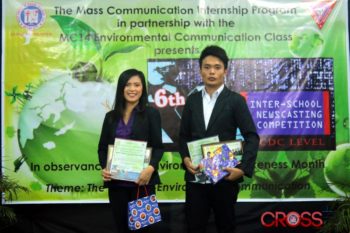 According to him, although the facilities are improving, unfortunately the initiative of the students are deteriorating because they prefer “instant learning” than of learning through the process.
According to him, although the facilities are improving, unfortunately the initiative of the students are deteriorating because they prefer “instant learning” than of learning through the process.
He observes that most of the students prefer to be on stage to be famous which he believes is a wrong way of thinking. “When you are taking up mass comm, it’s not about how advance the technology is, but about how well-versed the students are in using the facilities.”
In order to succeed the students must ask themselves the reasons why they took up Mass Communication? What is their primary driving force? “Define that in yourself, because that’s the factor to become a successful mass communication practitioner,” ends Mr. Andangan.
UP MINDANAO
The University of the Philippines Mindanao adapted Communication Arts from UP Los Baños in 1999 and produced their first graduates in 2003. According to Nilfa Glova, Assistant Professor in the Department of Humanities and also the Program Coordinator of UP Com Arts program, the recent technology advancement brought negative and positive effects to their students.
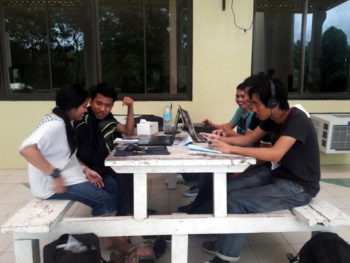 “Technology does limit the attention and concentration of students in class,” Glova remarks. To negate this, the school implements policies such as in prohibiting the students to access messages on their cellular phones or from any gadget while lectures and class discussions are going on. On the other hand, technology enhances UP students’ learning. “We extend classroom discussion by the use of web pages and social media groups. Students upload supplemental materials that they could read in order to enrich their learning of a specific topic and their communication,” she adds.
“Technology does limit the attention and concentration of students in class,” Glova remarks. To negate this, the school implements policies such as in prohibiting the students to access messages on their cellular phones or from any gadget while lectures and class discussions are going on. On the other hand, technology enhances UP students’ learning. “We extend classroom discussion by the use of web pages and social media groups. Students upload supplemental materials that they could read in order to enrich their learning of a specific topic and their communication,” she adds.
UP was founded in 1908 with the School of Fine Arts, College of Liberal Arts, Medicine, Veterinary Medicine, Engineering, Law, and the College of Agriculture in Los Baños, Laguna in 1909. It opened its branch here in Mindanao in 1995.
UNIVERSITY OF IMMACULATE CONCEPTION
The University of the Immaculate Concepcion (UIC) celebrated with its first batch of Communication Arts graduates in 2000. The school has been actively participating in the Communication Majors’ Alliance of Davao (CMAD) for the past years.
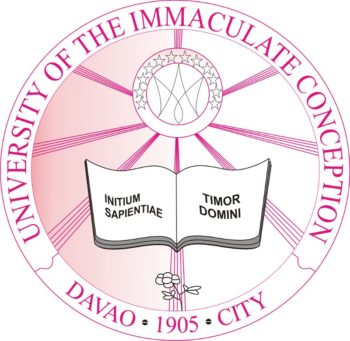 Even though the number of Comm Arts students in fourth year is fluctuating, UIC continues to give students what they deserve by providing them updated tools that help them in their learning. “We are always a friend of technology, we are updating. Students are exposed to real radio broadcasting and video presentation and many more. That’s how we cope up. We’re not lagging…” says Danilo Baradillo, the Literature Languages and Communication Arts Coordinator of UIC.
Even though the number of Comm Arts students in fourth year is fluctuating, UIC continues to give students what they deserve by providing them updated tools that help them in their learning. “We are always a friend of technology, we are updating. Students are exposed to real radio broadcasting and video presentation and many more. That’s how we cope up. We’re not lagging…” says Danilo Baradillo, the Literature Languages and Communication Arts Coordinator of UIC.
The school built laboratories to help students in their audio and video editing. It also encourages their students to be responsible in terms of the use of social media. In fact, its use in class is in moderation and only when applicable in the lesson.
UIC was founded in 1905 by the Religious of the Virgin Mary (RVM) and it continues to uphold humility and love of students in the society where they belong.
JOSE MARIA COLLEGE
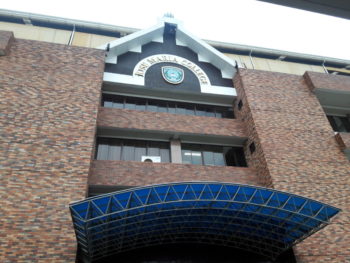 The Jose Maria College started in 2002 with mass communication as its flagship program, since the School President Rev. Apollo C. Quiboloy has its tri-media network namely Sonshine Media Network for television, DXRD for radio, and Pinas for print. Pastor Quiboloy wants to hone graduates, professionals through its mass communication program and he wants his workers to become graduates of the school, that is why he invested opening the course.
The Jose Maria College started in 2002 with mass communication as its flagship program, since the School President Rev. Apollo C. Quiboloy has its tri-media network namely Sonshine Media Network for television, DXRD for radio, and Pinas for print. Pastor Quiboloy wants to hone graduates, professionals through its mass communication program and he wants his workers to become graduates of the school, that is why he invested opening the course.
JMC Mass Communication Program Head Mark Roel Narreto says that the school is really coping up with the demands of the technology even in their curriculum. As a matter of fact they have updated their curriculum and added “Online Journalism” as a new subject to really cope. “The future of the media today is online,” Narreto explains. That is why they need to integrate it to the curriculum so that when their students will graduate, they also are equipped with the ICT skills.
UNIVERSITY OF MINDANAO
University of Mindanao Matina was built in 1946 by Atty. Guillermo Torres in the middle of recovering from World War II. With the fast movement of technology, the school upgraded its way of teaching. It currently offers courses that were not offered before in accordance with what the present companies are looking for from the students. It adapted with the changes brought about by technological advancements.
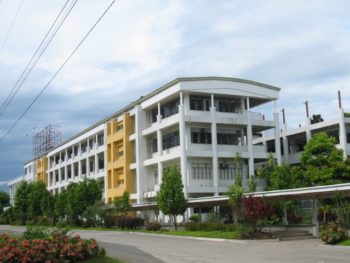 “We equipped our laboratories. Right now we are requesting our administration to provide us with licensed editor that our student needed in their production,” says Ms. Dina Hernandez, the Mass Communication Program Head of UM-Matina.
“We equipped our laboratories. Right now we are requesting our administration to provide us with licensed editor that our student needed in their production,” says Ms. Dina Hernandez, the Mass Communication Program Head of UM-Matina.
Hernandez also said that mass communication is a very challenging field. “A student must find his/her passion and motivation to serve, even if he/she will not earn much from being a member of media.”
As said, communication is the basic requirement in order to understand each other. Remembering each other’s responsibility, since the media is currently in the middle of a controversy towards the government, the students should know their own responsibility to be able to understand each other.
The Ateneo de Davao University is a private teaching, service and research university run by the Society of Jesus in Davao City in the Philippines. It is also known by the acronym AdDU.
To keep up with the changing technology, included in the curriculum are subjects like Basic Web Design, Media Management and Entrepreneurship and Nonlinear Video Editing.
* * * * * *
From the time of St. Francis de Sales, the patron saint of writers and journalists, who made extensive use of broadsheets and books in order to serve his fellowmen, DC Herald prays that communication graduates will also become “heralds of the good news” as they continue to brave the media shift from traditional to more complex ways in delivering the message of truth. (Fresa May Momo | Claudine Maricar Chicote, HCDC interns)



No Comments